
Doom is a first-person shooter game developed and published by id Software. Released on December 10, 1993, for DOS, it is the first installment in the Doom franchise. The player assumes the role of a space marine, later unofficially referred to as Doomguy, fighting through hordes of undead humans and invading demons. The game begins on the moons of Mars and finishes in hell, with the player traversing each level to find its exit or defeat its final boss. It is an early example of 3D graphics in video games, and has enemies and objects as 2D images, a technique sometimes referred to as 2.5D graphics.

Hexen: Beyond Heretic is a fantasy first-person shooter video game developed by Raven Software and published by id Software distributed through GT Interactive on October 30, 1995. It is the sequel to 1994's Heretic, and the second game in Raven Software's "Serpent Riders" trilogy, which culminated with Hexen II. The title comes from the German noun Hexen, which means "witches", and/or the verb hexen, which means "to cast a spell". Game producer John Romero stated that a third, unreleased game in this series was to be called Hecatomb.

id Software LLC is an American video game developer based in Richardson, Texas. It was founded on February 1, 1991, by four members of the computer company Softdisk: programmers John Carmack and John Romero, game designer Tom Hall, and artist Adrian Carmack.

Quake is a first-person shooter game developed by id Software and published by GT Interactive. The first game in the Quake series, it was originally released for MS-DOS, Microsoft Windows, and Linux in 1996, followed by Mac OS and Sega Saturn in 1997 and Nintendo 64 in 1998.

Worms is a series of artillery tactical video games developed by British company Team17. In these games, small platoons of anthropomorphic worms battle each other across a destructible landscape with the objective being to become the sole surviving team. The games are noted for their cartoony animation and extensive use of surrealism and slapstick humour.
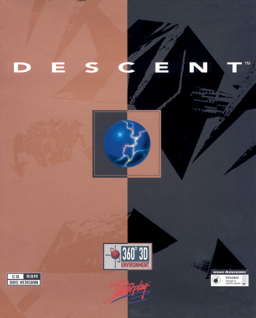
Descent is a first-person shooter (FPS) game developed by Parallax Software and released by Interplay Productions in 1995 for MS-DOS, and later for Macintosh, PlayStation, and RISC OS. It popularized a subgenre of FPS games employing six degrees of freedom and was the first FPS to feature entirely true-3D graphics. The player is cast as a mercenary hired to eliminate the threat of a mysterious extraterrestrial computer virus infecting off-world mining robots. In a series of mines throughout the Solar System, the protagonist pilots a spaceship and must locate and destroy the mine's power reactor and escape before being caught in the mine's self-destruction, defeating opposing robots along the way. Players can play online and compete in either deathmatches or cooperate to take on the robots.
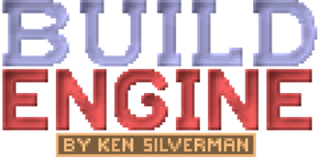
The Build Engine is a first-person shooter engine created by Ken Silverman, author of Ken's Labyrinth, for 3D Realms. Like the Doom engine, the Build Engine represents its world on a two-dimensional grid using closed 2D shapes called sectors, and uses simple flat objects called sprites to populate the world geometry with objects.

Gloom is a 1995 computer game for the Amiga computer. Gloom was the first commercially released Amiga clone of first-person shooter Doom.

Alien Breed 3D is a first-person shooter developed for Amiga by Team17 and distributed by Ocean Software in 1995. It is the fourth installment in Alien Breed franchise, a series of science fiction-themed shooters.

Alien Breed 3D II: The Killing Grounds is a first-person shooter game developed by Team17 for Amiga. Published by Ocean Software in 1996, it is the fifth game in the Alien Breed franchise, a series of science fiction-themed shooters.

In video games, first-person is any graphical perspective rendered from the viewpoint of the player character, or from the inside of a device or vehicle controlled by the player character. It is one of two perspectives used in the vast majority of video games, with the other being third-person, the graphical perspective from outside of any character ; some games such as interactive fiction do not belong to either format.
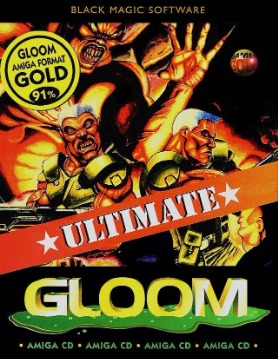
Gloom 3 is a video game for the Amiga computer, released in 1997. Gloom 3 was the third proper, commercially released clone of the first-person shooter Doom in the Gloom series on the Amiga.

A first-person shooter (FPS) is a video game centered on gun fighting and other weapon-based combat seen from a first-person perspective, with the player experiencing the action directly through the eyes of the main character. This genre shares multiple common traits with other shooter games, and in turn falls under the action games category. Since the genre's inception, advanced 3D and pseudo-3D graphics have proven fundamental to allow a reasonable level of immersion in the game world, and this type of game helped pushing technology progressively further, challenging hardware developers worldwide to introduce numerous innovations in the field of graphics processing units. Multiplayer gaming has been an integral part of the experience, and became even more prominent with the diffusion of internet connectivity in recent years.
Pie in the Sky is a 2.5D and 3D first-person shooter engine most popular in the mid-to-late 1990s by Pie in the Sky Software, also known as Power 3D and the 3D Game Creation or 3D Game Creation System engine. The engine was used in two games by the company as well as many other independent games and amateur projects after it was turned into a commercial game creator, largely because it minimized the amount of computer programming knowledge needed to make 3D games in its editing tools, making it suitable even for beginners with no game-design experience.

Testament is a 1996 video game by Insanity for the Amiga. It is a horror first-person shooter.
Based on id Software's open stance towards game modifications, their Quake series became a popular subject for player mods beginning with Quake in 1996. Spurred by user-created hacked content on their previous games and the company's desire to encourage the hacker ethic, Id included dedicated modification tools into Quake, including the QuakeC programming language and a level editor. As a game that popularized online first-person shooter multiplayer, early games were team- and strategy-based and led to prominent mods like Team Fortress, whose developers were later hired by Valve to create a dedicated version for the company. Id's openness and modding tools led to a "Quake movie" community, which altered gameplay data to add camera angles in post-production, a practice that became known as machinima.
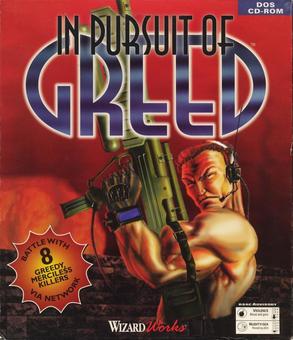
In Pursuit of Greed is a science fiction-themed first-person shooter (FPS) video game released in 1995 for DOS, developed by Mind Shear Software and published by Softdisk.
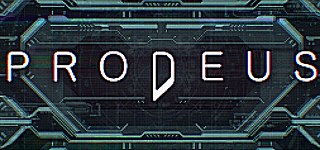
Prodeus is a first-person shooter game developed by Bounding Box Software and published by Humble Games. The game was crowdfunded by a Kickstarter campaign in April 2019. An early access version was released on November 9, 2020. The full game was released on macOS, Microsoft Windows, Nintendo Switch, PlayStation 4, PlayStation 5, Xbox One, and Xbox Series X/S in September 2022. A DLC was announced for the game in 2023.

Breathless is a first-person shooter released in 1995 for the Amiga 1200 developed by Fields of Vision and published by Power Computing. The game is set in a gladiatorial arena ran by alien overlords who have turned rebelling humans into cyborgs, featuring twenty levels that feature maps of varying height and the player seeking keycards or pressing switches to progress. Breathless received generally positive notices in the Amiga press, following several previews and demos being released. The game was later ported to the Amiga CD32 in 2014. The game's source code was released in 2017, leading to projects to port the game to modern PCs.

















